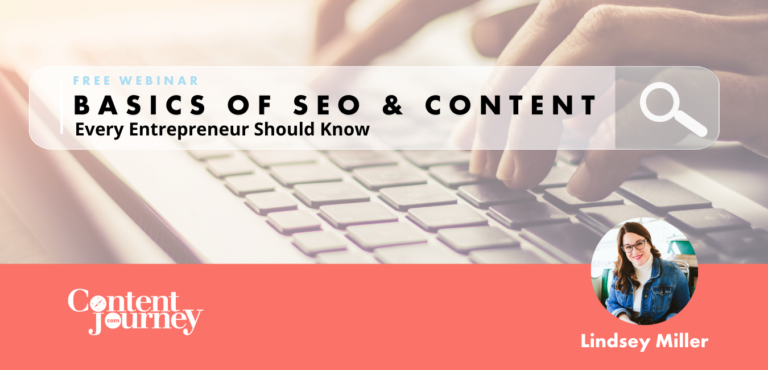Boost Your Brand With Effective Social Media Advertising
You already know that if you want to promote your business and expand your following, you must maintain active social media accounts. However, organically building a follower base takes time.
When you invest in social media advertising, you can kickstart the growth process and reach the users most likely to become customers — for a lower price than you might think.
Social media advertising isn’t without its challenges. The algorithms platforms use to target customers aren’t 100% accurate, and developing and executing an advertising plan can be tedious.
That said, the benefits of a strong social media advertising campaign almost always outweigh the risks. Here’s how to make this tactic work for you.
Marketing Strategy in Social Media Advertising
Before you actually start paying for ads, you need a clear marketing strategy. Without a strategy, guiding your marketing efforts is more difficult. You also won’t have a way to measure your ad campaign’s performance. In other words, you won’t know what success looks like, let alone if you’re reaching it. Here are some of the key elements of developing strategy.
Identify and Segment Your Target Audience
If you want your ad campaign to be successful, you must ensure you’re reaching the right people. For instance, if you sell makeup for teenage girls, you don’t want to waste money showing ads to elderly men. Before you do anything else, do some market research!
Examples of how to segment your audience include:
- Age
- Gender
- Income level
- Location
- Occupation
- Personal goals
- Buying and consumption habits
It’s often helpful to combine different segments to create “buyer personas,” or representations of your ideal customer. For example, one of your buyer personas might be a young, high-income woman who wants an easy way to get in shape.
Set Clear Goals
If you don’t set goals for your marketing campaign, you can’t measure its progress. Are you trying to increase your follower count? Boost brand recognition? Drive sales? Something else?
You might already be familiar with the concept of setting SMART (specific, measurable, achievable, relevant, time-bound) goals. Making sure your goals are SMART is always a good idea!
Want to learn more about setting great marking goals? Check out our post offering 5 Essential Tips for Setting Digital Marketing Goals.
Choose the Right Social Media Platforms
It’s generally a good idea to make sure your business has a presence on more than one social media platform. However, that doesn’t mean you need to run ads on every single social media channel. Prioritize the platforms that are most popular with your target demographic.
Integrate Social Media Marketing With the Rest of Your Marketing Plan
Keeping up with social media advertisements can be challenging, especially if it’s only one part of your marketing strategy. Comprehensive marketing management software can help you see how social media ads perform as part of your broader policy.
Just like with other types of content, it’s a good idea to plan your ads ahead. That way, you won’t be scrambling when it’s almost time for a new ad to go live.
Social Media Ad Formats
Social media ads can take a minute or two to understand. But there’s some opportunity in that confusion — you get to choose from several different kinds of ad formats.
Story Ads
On social media, a “story” is a time-limited post that shows videos or photos. Users can customize stories with background music, stickers, etc. Story ads are (usually) 15-second ads that show up between stories.
Video Ads
As you may have guessed, video ads are in the form of short videos — much like old-school TV commercials. If you have the budget to create high-quality, dynamic videos, these ads can be a great way to grab your audience’s attention.
Image Ads
An image ad involves the promotion of your company or product over a single photo or other image. These kinds of ads can boost awareness and brand recognition — even if a user doesn’t click on your ad.
Content Ads
When you think of content marketing, you might imagine an organic SEO strategy. But did you know that you can create content ads? These are particular types of content you sponsor or pay to post. Here are some common examples:
- Articles
- Listicles
- Blog posts
- Podcasts
- Videos
- Infographics
One type of content ad is what’s called a “thought leadership” piece. This is an article you pay to publish, and it establishes you or your brand as knowledgeable leaders in your industry.
Mobile App Ads
Some people might regard in-app ads as a nuisance. But regardless of how you personally feel about them, mobile app ads are a great way to reach potential customers. If someone has just downloaded an app (or even if they’re a regular user), they probably aren’t going to close the app just because an ad pops up.

Social Media Platforms for Advertising
Choosing which social media platform(s) to run your ads on is a critical decision. If you choose the right one, you’ll have no problem reaching thousands of promising potential customers. But if you choose the wrong one, you’ll waste money trying to promote your company to a group of mostly disinterested people.
One of the best ways to determine what platform to use is to research your buyer personas and target demographics and see which sites they prefer. It’s also wise to have a general understanding of advertising on each of the main social media giants.
Facebook Ads
Facebook is one of the older forms of social media, and it’s still going strong. As a result, it’s used by people of various ages, but it’s especially popular with people 25-34.
If you choose to advertise on Facebook, you’ll have no shortage of options. These are the various types of ads you can choose from:
- Image Ads. Usually involve a single image plus a headline.
- Video Ads. Can show up in stories, user feeds, or ads in longer videos.
- Carousel Ads. Include up to 10 scrollable images.
- Poll Ads. Let you add a poll at the end of an ad.
- Slideshow Ads. Let you include multiple photos in a slideshow-style presentation.
- Instant Experiences Ads. Include a full-screen experience that lets users explore products, photo carousels, and more.
- Collection Ads. Let mobile users view your collection of products without leaving the app.
- Lead Ads. Let interested users send you contact info or sign up for something.
- Messenger Ads. Appear as chat requests in Facebook messenger.
- Dynamic Ads. Promote particular products to potentially interested customers.
- Stories Ads. Appear in between user stories.
- Augmented Reality Ads. Include animations that let users interact with your company.
All of these options can be overwhelming, especially if you don’t have experience with social media marketing. When in doubt, stick to the classic image, video, or story ads. You can always expand to other types in the future if you want.
Instagram Ads
Instagram started out as a platform to share pictures. It’s still fairly image-based, but users can share videos now, too. If you choose to advertise on Instagram, you’ll be able to select some of the same ad formats as you see on Facebook:
- Image ads
- Video ads
- Carousel ads
- Collection ads
It might look like you have far fewer options than you get with Facebook, but keep in mind that Instagram also lends itself to influencer marketing. If you think your brand might benefit from a partnership with an influencer, it’s worth getting established and building a following (through paid ads) on Instagram first.
Twitter Ads
X, as it’s now technically known — although plenty of people still refer to it as Twitter — is a much different platform from Facebook or Instagram. Therefore, some of the ad choices are unique. They include:
- Text Ads. These look like plain-text tweets.
- Video Ads. These are tweets with an included video.
- Image Ads. These are tweets with an included photo or other image.
- Carousel Ads. These ads let you scroll through photos.
- Moment Ads. These ads include a collection of tweets.
- Follower Ads. These ads suggest individual users follow your brand’s X account.
- Amplify Pre-Roll. This places ads at the start of content from pre-screened publishers.
- Amplify Sponsorship. These let you sponsor a video from a particular publisher.
- Twitter Live. This promotes your brand’s live stream.
- Trend Takeover. These include a mention of your brand in the “What’s happening” section.
- Trend Takeover+. This includes your brand (along with a visual) at the top of the “explore” tab.
- Branded Hashtags. These make an emoji of your choice show up when someone uses your hashtag.
X uses an auction system to charge for ads. This means that if you’re trying to reach a more in-demand audience, your ad will likely be more expensive.
Advertising on X can be costly and complicated, but there’s one especially great upside. When you start a campaign, you pay for a certain objective. You aren’t charged if someone interacts with your post in a way that doesn’t fit your objective.
For example, if your campaign objective is to get more followers and someone likes your post but doesn’t follow you, you don’t pay for the like.
LinkedIn Ads
LinkedIn is a great place for professional networking. It’s also an excellent place to advertise your business. LinkedIn’s ad options have some similarities to both X and Facebook/Instagram ads:
- Single-image ads
- Video ads
- Event ads
- Document ads (sharing documents to user feeds)
- Thought leader ads (sponsoring posts by experts in your company)
- Conversation ads (message-style ads promoting your newsletter, website, etc.)
- Message ads (in the form of direct messages to prospects)
- Lead-gen forms (pre-filled forms for prospects to give you their information)
- Text ads
- Spotlight ads (showcasing certain events, products, or services)
- Follower ads (encouraging targeted users to follow your business)
As with any other platform, advertising with LinkedIn can be complex. Fortunately, LinkedIn publishes tip sheets and other resources to help you get the most out of your ad campaign.
YouTube Ads
YouTube is a bit different from most kinds of social media. However, you still have options when it comes to choosing what types of ads to run:
- Skippable In-Stream Ads. Users can skip these video ads, and you’re only charged for full views.
- In-Feed Video Ads. These show up for active users searching for content.
- Non-Skippable In-Stream Ads. Users see your whole message because they can’t skip the ad.
- Bumper Ads. These are very short (usually about 10 seconds) video ads that appear at the beginning, middle, or end of a longer video.
- Overlay Ads. These bumper-style ads appear toward the bottom of the video screen.
YouTube ads can be somewhat challenging, especially if you’re new to social media advertising. Fortunately, YouTube can walk you through the process.
How to Advertise on Social Media
Your exact social media advertising strategy will vary depending on your goals. However, in general, you want to follow these steps.
Create Social Media Ad Accounts
Most social media platforms require you to have a business account to post ads. If you don’t already have a business account with one or more of these sites, you can usually convert a personal account to a business one.
Define Your Ad Budgets and Bidding Strategies
Many businesses want their ads to reach social media users. There are so many competing businesses that it would be impossible to give every single one the exposure it wants.
As a result, platforms generally require you to set a “bid,” or the maximum amount you’re willing to spend per like, click, or other action. Each platform has its own behind-the-scenes “auction” determining whose ad is shown and when.
Delving into different bidding strategies can be time-consuming, and if social media is just a small part of your overall marketing plan, you might not want to spend a large amount of time studying them.
Fortunately, most platforms simplify things for business owners — they’ll let you set your bid based on the total amount you want to spend, the goal you want to achieve, etc.
Before you get into the specifics of setting a bid strategy, decide on your budget. It will make things a lot easier!
Target Specific Audiences
When you run your ad on a social media platform, you can usually choose the audiences you want to target. If you’ve done your audience research ahead of time, this part shouldn’t be an issue. You’ll simply enter the information you already know about your target market.
Design Compelling Ad Creatives
In all the focus on advertising strategy, don’t forget what’s arguably one of the most important things — the ads themselves. In many cases, your ad will be a user’s first impression of your brand. There’s a lot at stake, so it’s not a bad idea to hire a professional.
Monitor and Optimize Ad Performance
The importance of SMART goals was mentioned earlier. You should always monitor your ad performance to see if you’re reaching your goals. Every marketing campaign needs some tweaking, and the sooner you can correct issues, the better your chances of a great ROI.
How Much Does Social Media Advertising Cost?
Social media marketing can be inexpensive or extremely costly. There are countless strategies to choose from, but the two most important strategies to know are cost-per-click (CPC) and cost-per-impression (CPM).
With CPC marketing, you pay each time someone clicks on your ad. With CPM, the amount you pay depends on how many people see your ad. CPC is usually more expensive, but it tends to be better for lead generation. CPM is less expensive, and it’s a good choice if your primary goal is raising brand awareness.
The exact cost of your campaign depends on factors, including:
- Industry
- Competitors
- Target audience
- Social media channel
- Ad type
- The time of year
The ultimate goal of a marketing campaign is to get a great ROI. To make sure you’re on the right track, you might consider launching a limited campaign as you determine which tactics are working best. From there, you can re-invest the income from that smaller campaign to a larger one.
How do you calculate ROI? There’s a simple formula you can use:
ROI = (earnings from the campaign – costs of the campaign)/costs of the campaign x100
You can use this formula to calculate the total ROI across all platforms. However, if you want to see how the different channels stack up, try calculating the ROI for each.
Measuring Success in Social Media Advertising
As you can see, calculating ROI isn’t necessarily difficult. However, that’s not the only metric you should be using. Using analytics tools (either those provided by social media companies or third-party tools), make sure to track key performance indicators (KPIs) including:
- Engagement
- Ad reach
- Conversions
- Impressions
- Click-through rate
- Followers
- Website traffic
There’s no way to predict exactly how well a social media campaign will do. However, A/B testing different ads and other kinds of content will help you find a good place to start.
Let Content Journey Help
You’re already busy running your business. When it comes to marketing, you might not have the time to master all there is to know about advertising on social media. Add in the fact that social media is constantly changing, and your social media advertising campaign can quickly get overwhelming.
That’s where Content Journey comes in. Our experts deal with marketing, social media, and the intersection between the two. We’ll be able to make sure you have a social media marketing strategy that always works for you.Contact us today to learn more.







